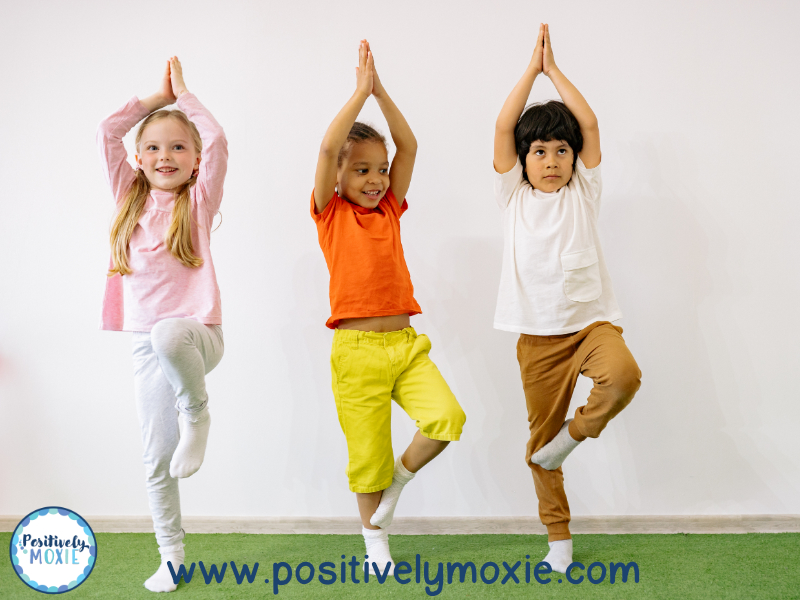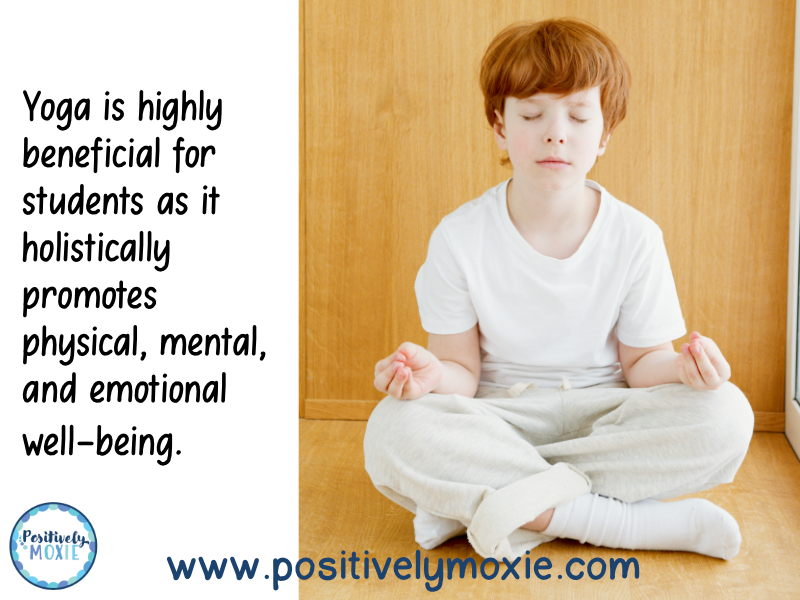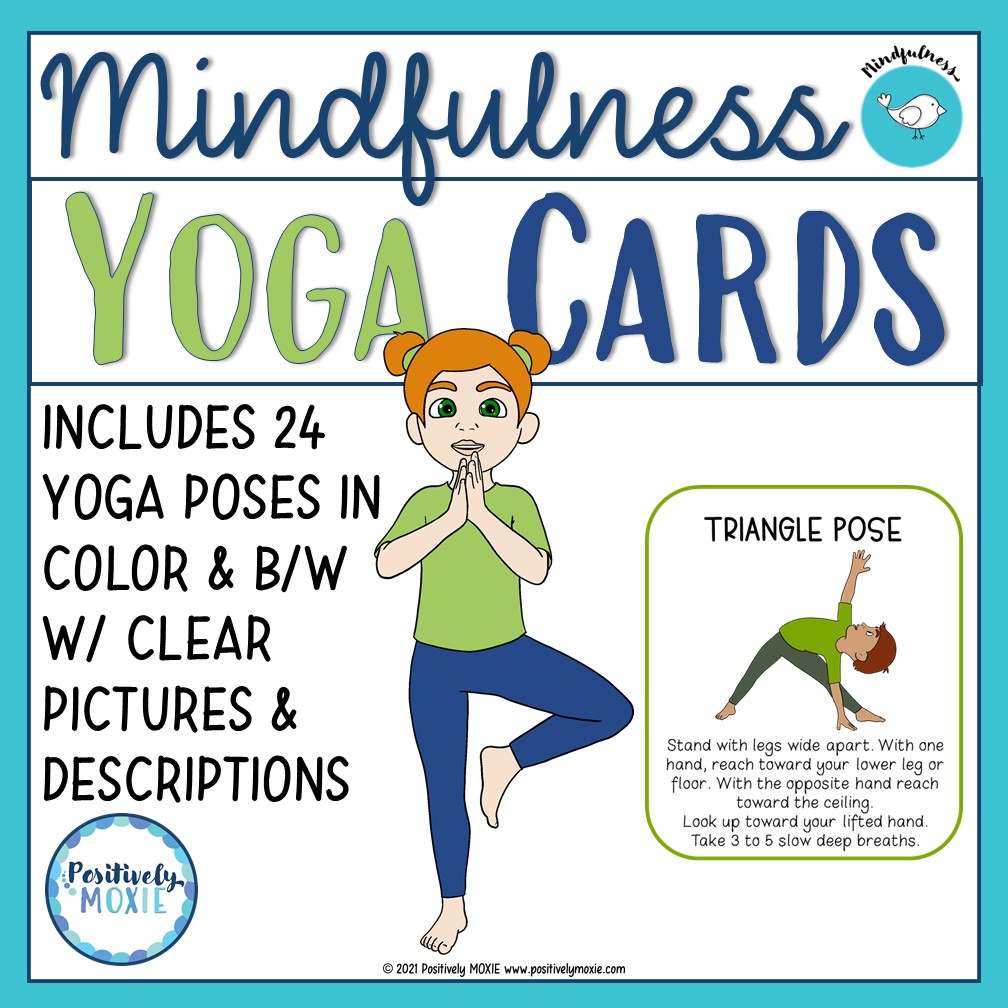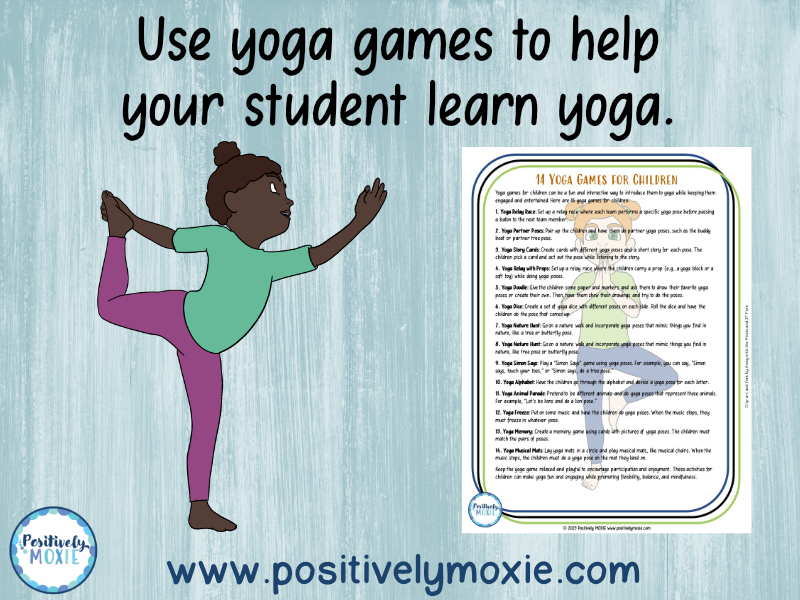Fun and Engaging Tips to Make it a Success

Most educators know that yoga is good for you. But how do you introduce yoga in the classroom to tap into its benefits? Introducing yoga in the classroom to elementary school students should be a positive and enjoyable experience. Creating a welcoming and mindful classroom environment can help your students develop valuable life skills that will benefit them academically and personally. Research tells us that practicing yoga helps students by promoting mental, physical, and emotional well-being.
1. Breath Awareness
Yoga in the classroom emphasizes the importance of conscious breathing and is also a central component of yoga. It is often integrated into yoga routines, helping individuals connect their breath to their movements, leading to a deeper sense of mindfulness.
2. Body Awareness
Secondly, yoga involves various physical postures (asanas) that require practitioners to tune into their bodies, promoting body awareness. Mindfulness encourages paying attention to bodily sensations and using the body as an anchor for mindfulness, which aligns with the body-focused aspects of yoga.
3. Stress Reduction
Next, yoga, emphasizing physical postures, breath control, and relaxation techniques, helps alleviate stress and promote a sense of calm.
4. Emotional Regulation
Besides stress reduction, yoga promotes emotional regulation through physical movement and releasing tension stored in the body.
5. Greater Concentration
To conclude, through mindful movements and breath awareness, yoga cultivates concentration, which can benefit daily life.
When teaching students yoga in your classroom, consider the following suggestions.
Learn
First, seek to educate yourself. Before introducing yoga to your students, you must understand yoga and its benefits for students. Consider taking a yoga class for kids or researching online resources for teaching students yoga. Books like Yoga for Kids, to Introduce in Class” can be a helpful resource.
Create
Next, create a safe space. Designate an area in your classroom where students can practice yoga comfortably. Ensure that the room is free from clutter and distractions. Start by setting clear goals for your classroom yoga practice. Define clear objectives for introducing yoga to your students. These might include promoting mindfulness, improving focus, increasing physical activity, or enhancing emotional regulation.
Plan
After creating a safe classroom space, plan to incorporate yoga into your week’s agenda. Integrate yoga into your daily or weekly routine. Start with short sessions (10-15 minutes) and gradually increase the duration as students become more comfortable with the practice. Begin each yoga session by demonstrating the poses yourself. Encourage your students to watch and listen attentively before attempting the poses.

Model
Besides planning your yoga session, modeling the poses using visual aids such as posters, flashcards, or images can be very helpful in teaching yoga poses. Place these aids around the classroom to remind students of their poses and names. Also, teach your students simple breathing exercises like the “Balloon Breath” or “Bee Breath” to help them relax and focus.
Engage
First and foremost, make it fun. Keep the sessions engaging and enjoyable by incorporating games, music, or yoga-related stories. Using these activities will make the practice more appealing to young students. Encourage mindfulness by explaining the concept of mindfulness to your students and how yoga can help them become more aware of their bodies and feelings. Discuss the importance of being present in the moment.
Understand
Understand that each student is unique; some may be more comfortable with yoga than others. Encourage a non-judgmental and accepting environment where all students feel safe participating at their own pace. Considering this, make sure you have parental involvement if you can. Start by informing parents about your yoga initiative and encourage them to practice yoga at home with their students, which can help reinforce the benefits of yoga and mindfulness.
Assess
Finally, Look at your student’s progress. Periodically assess the impact of yoga on your students’ mindfulness, focus, and overall well-being. Use techniques such as discussions, journaling, or self-assessment activities. Lastly, adjust as needed. Be open to feedback and adapt your yoga program as required. Explore new poses, activities, or resources to keep the practice fresh and engaging.
Use these 10 fun and engaging tips for introducing yoga in your classroom:
- Yoga Poses: Teach students yoga poses inspired by animals like Downward Dog (dog), Cat-Cow (cat), and Cobra (snake). Encourage your students to make animal sounds while doing the poses!
- Yoga Cards: Yoga cards with pictures of different poses. Let students take turns picking cards and trying out the poses.
- Storytime Yoga: Create short stories or books incorporating yoga poses. For example, act out a story about a journey to the jungle with corresponding poses like Elephant (standing with raised arms), Lion’s Roar (roaring with arms wide), and Monkey (swinging arms and legs).
- Yoga Freeze Dance: Play music and have a “freeze dance” session where students perform yoga poses when the music stops.
- Yoga Alphabet: Assign a yoga pose to each alphabet letter. Have students spell their names using yoga poses. For example, “S” for Star Pose, “A” for Airplane Pose, etc.
- Partner Poses: Pair students up and let them practice partner yoga poses, like Tree Pose with joined hands or Boat Pose with their feet touching.
- Breathing Buddies: Use stuffed animals or soft toys as “breathing buddies.” Have students lie down with their buddy on their belly and breathe deeply, watching the buddy rise and fall.
- Nature Yoga: Take the class outside and practice yoga in a natural setting. For instance, use the environment to inspire poses, like Tree Pose next to a tree or Butterfly Pose in a field of flowers.
- Yoga Games: Incorporate yoga into fun games, such as “Yoga Simon Says” or “Yoga Musical Chairs,” where students must perform poses when the music stops.
- Relaxation Time: End each yoga session with a relaxation exercise. Have students lie down, close their eyes, and imagine a peaceful place while you guide them through deep breathing and relaxation.
Remember, the key to introducing yoga to students is to make it playful, imaginative, and non-competitive, allowing them to enjoy the physical and mental benefits of this ancient practice in a fun and engaging way.
Yoga is highly beneficial for students as it holistically promotes physical, mental, and emotional well-being. Through gentle stretches, breathing exercises, and mindfulness techniques, yoga helps students develop flexibility, balance, and strength while enhancing their body awareness and coordination. Moreover, it fosters emotional resilience by teaching them how to manage stress, anxiety, and emotions through relaxation and mindfulness practices.
In conclusion, yoga encourages self-confidence, concentration, self-discipline, and valuable life skills that can positively impact a student’s growth and development, promoting a lifelong commitment to well-being.




